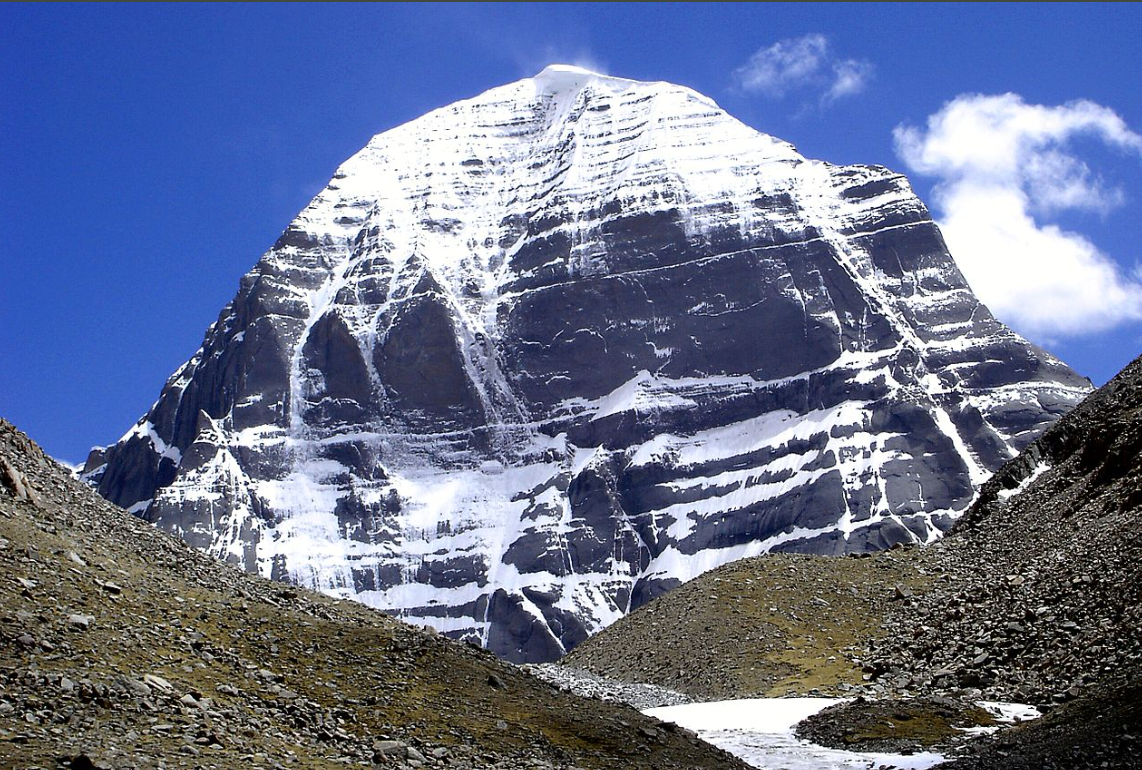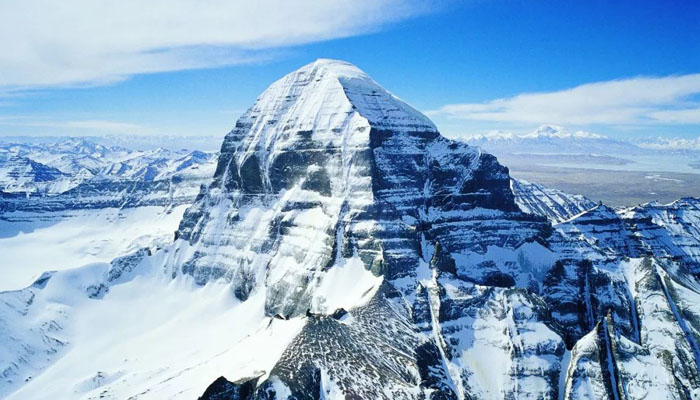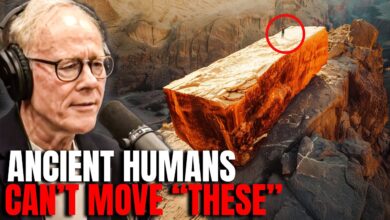The Most Mysterious Mountain in The World

To date, nearly 7,000 people have conquered Mount Everest, the world’s highest mountain. However, there is a mountain thousands of meters lower, not on the list of the world’s 100 highest peaks, that no one dares to climb — Mount Kyes. At the end of the 20th century, a group of Siberian climbers attempted to conquer this mountain. Just a few weeks before, another group had also attempted but disappeared without a trace.
During the climb, these people discovered something strange: they began to age rapidly. Their hair and nails grew significantly longer, making them look as if they had lived on this mountain for weeks, not just hours. Eventually, they decided to return to normal life, but did not know that “normal life” had been lost to them since the day they decided to climb Mount Kyes. Just a year later, all the climbers had died, and strangely enough, they all died of old age, suggesting that Mount Kyes had aged them by decades in just one year.
Experts who have studied the mountain believe that it may not be a natural mountain, but rather a man-made pyramid built by an ancient civilization with advanced technology. Some believe that this civilization may have been divine, while others claim that it may have been extraterrestrial.
Mount Kyes, also known as Kyes Parvat or “Stairway to Heaven,” is located in the southwestern corner of Tibet. For centuries, the mountain has attracted people’s attention for many mystical reasons. Mount Kyes is associated with four major religions: Hinduism, Buddhism, Jainism, and Bón. In addition, four major rivers flow from the mountain, each flowing in a direction of the cardinal points.
The shape of Mount Kyes is also remarkable; it does not look like a natural mountain but is almost perfectly shaped with vertical edges, as if it had been designed and built. The sides of the mountain are four different colors: the north side is yellow, the south is lapis lazuli, the east is crystal, and the west is ruby.
Another strange thing is that the north side of the mountain always has less snow than the south side, although the theory is that the north side should have more snow due to less sunlight. Additionally, there is a strange magnetic field on Mount Kyes that prevents compasses from working, and no vegetation grows on the mountain, which is rare on other mountains.
The south side of the mountain has a carving that resembles a swastika, which creates a shadow at sunset, a symbol considered lucky in many religions. In addition, there are other strange shapes that are said to appear on the mountain, such as the shape of the god Shiva and the Om symbol, both of which have sacred meanings in Hinduism.
Geographically, Mount Kyes is known as the “navel of the Earth,” because it is located at the center of the planet and is at uniform distances from many major structures in the world. The two lakes Mansarovar and Rakshas Tal also have strange features; Lake Mansarovar is the highest freshwater lake in the world and never freezes, while Lake Rakshas Tal is very salty and has the property of mysteriously disappearing.
The strange experiences of climbers on Mount Kyes do not stop there; in addition to the story of the Siberian climbers, many others have reported strange phenomena during their conquest of the mountain. Some felt as if the mountain was changing position, while others were forced to retreat by inexplicable storms. Even modern aircraft cannot fly over Mount Kyes.
Currently, there are two main theories to explain the mysteries of Mount Kyes. The first is the “Alien Hypothesis,” which suggests that Mount Kyes may be a structure built by aliens. Some believe that Hindu gods used advanced technology in the past, with many ancient documents describing encounters with aliens.
With all these strange things, Mount Kyes is certainly one of the most intriguing and puzzling geographical mysteries in the world.

Mesev believes that Mount Kailash is not just an ordinary mountain, but an ancient pyramid built by humans, but not by ordinary humans, but by a superhuman race that has a profound understanding of subtle energies. He believes that this understanding explains the mystical connection between Mount Kailash and other ancient structures such as the pyramids of Giza and Teotihuacan. Mesev also emphasizes that the Kailash complex is directly related to life on Earth, and when he created a diagram of the city of the gods, including pyramids and stone mirrors, he was surprised to find that its spatial structure was similar to the molecular structure of DNA.
According to Tibetan legend, there is a mystical city called Shambala, or the city of the gods, that exists at the foot of Mount Kailash. This legend claims that this city holds the gene pool of ancient civilizations, preserving the genetic heritage of humanity. In particular, Adolf Hitler once believed that the origin of the Aryan race, which he believed to be superior to other races, could have originated here. In 1938, Hitler sent a team of five Germans to explore Tibet in search of traces of this origin.
Some scientists have put forward plausible reasons to explain some of the mysteries surrounding Mount Kailash. Although the mountain appears almost perfect in appearance, its pyramidal shape may be the result of natural processes during the ice age about 2.6 million years ago. According to this theory, the glaciers carved out valleys and cut away the mountainside, forming the sharp peaks and smooth slopes we see today.
Regarding the difference in snow between the two sides of the mountain, the southern side of Mount Kailash receives more sunlight but also receives more moisture from the moist monsoon winds from the Indian Ocean, resulting in more snow on this side than the northern side, which has drier air. The reason planes don’t fly over this area is not because of supernatural powers but because of the difficult terrain. The Tibet region is known as the “roof of the world” with an altitude of over 4,000 m above sea level, and it has many of the highest mountains in the world. Although modern flight technology allows planes to fly over this area, they often avoid it because in an emergency, landing safely is very difficult. When a plane experiences a pressure problem, the pilot will have to drop below 3,000 m to give passengers enough air to breathe, but the Tibet region does not have many safe landing options.
Although some mysteries have been solved, many other phenomena of Mount Kailash remain unexplained. One of the biggest mysteries is the strange aging phenomenon that people experience when near the mountain. A famous geologist, Valdia, suggested that the “Om” representation on Mount Kailash could be rocks that have been folded in half, but the image is too perfect to be the result of normal geological processes.
Furthermore, Mount Kailash has a unique geological structure: while the surrounding peaks are mainly formed from sedimentary rocks, Mount Kailash is made up of rare black rocks. Climbers also report that they often feel like they are walking backwards when trying to reach the top, as if the mountain is changing position. Research on the Matterhorn shows that it also has a shift that cannot be detected by the naked eye.
Another mystery is the difference between the two lakes Manasarovar and Raksas Tal. Although they are close to each other, the two lakes have completely different characteristics. Raksas Tal is an inland lake, with no place to drain, so the water in the lake can only be lost through evaporation or seepage into the ground, explaining why the lake can disappear and appear suddenly. Manasarovar, meanwhile, is not an inland lake and drains into Raksas Tal, but the two lakes behave in completely opposite ways.
Finally, although Einstein’s time dilation theory suggests that time passes more slowly at high altitudes, it still doesn’t explain why some people age more rapidly. The difference in time passes at sea level and in the mountains is not large enough to explain this strange phenomenon, with many people reportedly dying of aging within a year of returning from Mount Kailash. Finally, the Chinese government banned climbing Mount Kailash in 1980, leaving the mysteries of the mountain forever unsolved.








